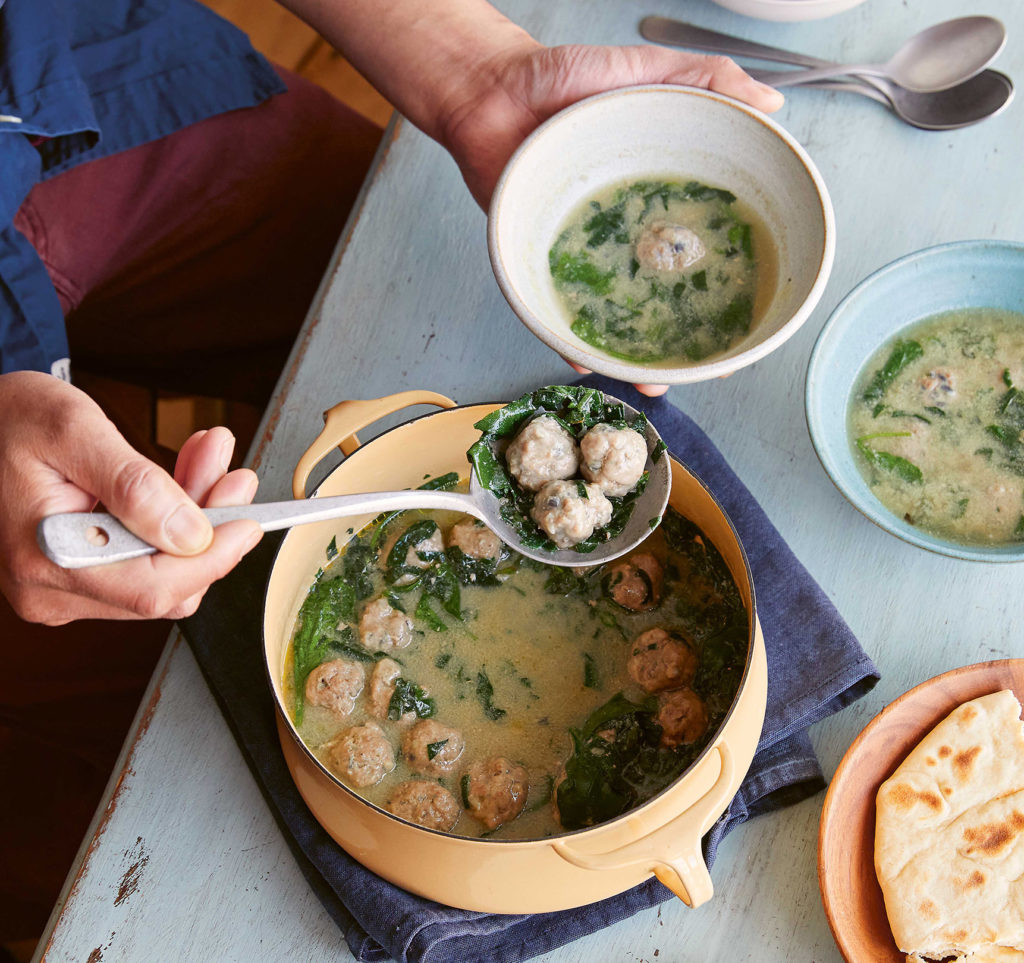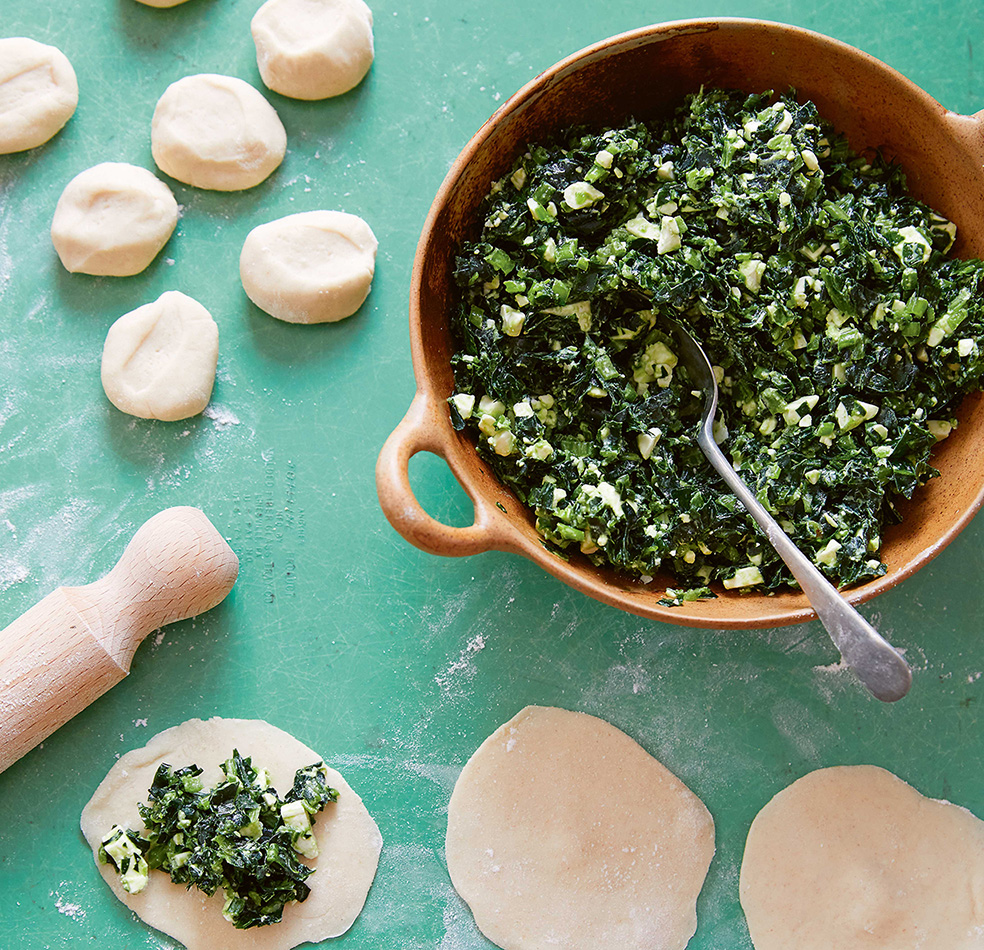Taste Tibet: recipes from the Himalayas
Nourishing, simple, seasonal food that heals as well as fuels. This way of eating might be popular today, but it’s been traditional in Tibet for over 8000 years. Now a new cookbook has been released that will introduce you to the joys of Tibetan cuisine. Taste Tibet is a collection of 80+ recipes from the Tibetan plateau, all written for today’s home cook.
The book is created by food writer Julie Kleeman and Tibetan cook Yeshi Jampa. The two met by chance when Kleeman was backpacking through India, and Jampa invited her to share a meal with him. That memorable first meal, a hearty bowl of hand-pulled noodle soup, was just the beginning of their culinary journey. Fast forward a decade and the pair are now married with two young kids, sharing their love of Nepalese cooking and flavours through their Taste Tibet restaurant in Oxford, England.
Taste Tibet will show you how to create comforting soups and stews, teach you the secrets of hand-pulled noodles and provide you with everything you need to know about momo dumplings. All of this is interwoven with stories of Jampa’s childhood in Tibet and the shared love of food that brought the authors together. They reveal nomadic Himalayan food culture and a way of life that celebrates family, togetherness and respect for food. Below, we share two recipes from the book – Tibetan meatball soup and cheesy momos. To add to the whole experience, Jampa also shares his personal insights on each dish.

Tibetan meatball soup
Serves 4
In Tibet, the practise of brides taking several husbands from the same family has been commonplace since ancient times. Jampa’s mother married two brothers, and Jampa and his brothers and sisters know them simply as “older father” and “younger father”. Officially this system is now forbidden under Chinese law, but in rural areas it remains normal practice. Given the specific challenges of Tibet’s topography, it has advantages. With little arable land available and much labour needed to tend it, the marriage of a family’s sons to one bride ensures that the land stays within the family and that there are sufficient hands to both work in the fields and guarantee a male presence in the home.
The practice also tends to reduce the number of heirs, and hence the number of mouths the land must feed. Although Jampa’s younger father is now vegetarian, he used to enjoy meatballs way back when. Jampa remembers that this dish would be his contribution to weddings and other events taking place in the village. Weddings typically last two or three days and have up to 400 guests. So you can imagine how many meatballs would be needed!
You’ll need:
350g beef mince, ideally 15–20% fat content
1 free-range egg
½ small red onion, finely chopped
1 large garlic clove, finely chopped
½ tsp crushed Sichuan peppercorns (yerma)
1½ tsp ground coriander
1 tsp salt
Plain white flour, for dusting
125g baby spinach leaves, washed
Coriander leaves, to garnish
Method:
1. Place the mince in a mixing bowl and crack in the egg. Mix together very well using your hand or a fork. Then add the onion, garlic, Sichuan pepper, coriander and half a teaspoon of salt. Mix everything together thoroughly.
2. Sprinkle a little flour onto a chopping board. Pinch off a 2.5cm piece of the meat mixture and roll it between your palms to make a ball. Next, roll it through the flour on the board. Don’t douse it in flour; you’re aiming for a light coating. Pick up the meatball and roll it between your hands again, then give it another roll in the flour before setting aside. Repeat with the rest of the meat mixture, adding a little more flour to the board as needed. You should end up with about 30 meatballs.
3. Measure out 1 litre (4 cups) of boiling water into a large wok and place over a medium heat. When the water returns to the boil, add the meatballs and stir them around gently, adding a little more water if the meatballs are not fully covered. Add the remaining half teaspoon of salt, turn the heat up as far as it will go and simmer the meatballs for 4–5 minutes, stirring occasionally. In the final minute of cooking, add the spinach to the soup.
Just before you take the wok off the heat, check that the meatballs are cooked by fishing one out and cutting it open. It should be brown all the way through, not pink.
4. Serve the meatball soup in bowls, garnished with coriander.

Cheesy momos
Makes about 40 momos
Vegetarian
Jampa’s mum loves making these momos. Tibetan cheese is complex in flavour. It’s sharp/sweet and with herbal hints, and makes for delicious dumplings. Feta is a good substitute here. It has all the sour creaminess of Tibetan cheeses and its crumbly texture means that the filling is quick to prepare. Jampa’s mother likes to pair the cheese with pak choi, picking it while it’s still very young and tender. So have a go with pak choi if you can find it. Otherwise, spinach makes the momos very juicy. It also gives the stems a nice crunch, so don’t discard these as you chop. Serve your cheesy momos with tomato sepen (see page 193 of Taste Tibet) or walnut and chilli dip (see page 199).
You’ll need:
For the dough:
500g (3⅓ cups) self-raising flour, plus extra for dusting
For the filling:
3 bunches of whole leaf spinach, about 500g in total
1 tsp salt
2 tbsp cooking oil
200g feta cheese, finely diced
Method:
To make the dough and filling:
1. For the dough, put the flour into a mixing bowl. Slowly pour in about 250ml (1 cup) of warm water – a hot handwash temperature is good – into the flour with one hand, while mixing with the other. Add just enough water to make a dough. You don’t want it to get too sticky. Knead until the dough forms a ball in the bowl. Cover, set aside for 15–20 minutes.
2. Meanwhile, make the filling. Finely chop the spinach – ideally the pieces should be as small as 5mm. Put it into a large mixing bowl, then fill the bowl with water and wash the spinach by swirling it with your hand. Leave it to stand for 2 minutes, then swirl again. Transfer the spinach to a colander in the sink and leave to drain for a minute or two. Rinse out the mixing bowl and tip the spinach back into it. Add the salt and oil and mix well by hand, then leave to stand for about 5 minutes.
3. Put the feta into another mixing bowl. Transfer the spinach into the feta bowl, batch by batch. Squeeze the spinach between your hands as you lift it out, so any excess liquid drains back into the original bowl before you add it to the feta for the filling. Otherwise, the momos will be soggy and hard to wrap. Mix the spinach and feta together well.
To make your momos:
1. Take dough out of the bowl and knead it for a couple of minutes. Divide it into four equal pieces and return to the bowl. Sprinkle a little flour onto your work surface. Don’t overdo it, as too much flour can stiffen the dough, making the momos harder to wrap later.
2. Take the first piece of dough, keeping the rest covered in the bowl to stop them from drying out. Roll out the dough into a sausage shape about 25cm long, then cut into 10 equal slices, lightly flattening each one with your hand.
3 Using a rolling pin, and making one wrapper at a time, push and pull the flattened piece of dough up and down quickly and firmly. Hold it with your spare hand and turn it little by little as you go. The middle should end up a bit thicker than the outer edges, and it should fill the palm of your hand; it doesn’t need to be a perfect circle.
4. When you’re ready to fill, wrap and fold your momos (see instructions on pages 146–148), shaping them however you like.
5. For best results, steam the momos (see page 148) over a high heat for about 13–16 minutes, cooking them in batches according to the size of your steamer.

Images and text from Taste Tibet by Julie Kleeman and Yeshi Jampa. Food photography by Ola O. Smith. Travel photography by Keiko Wong. Murdoch Books RRP $49.99.









